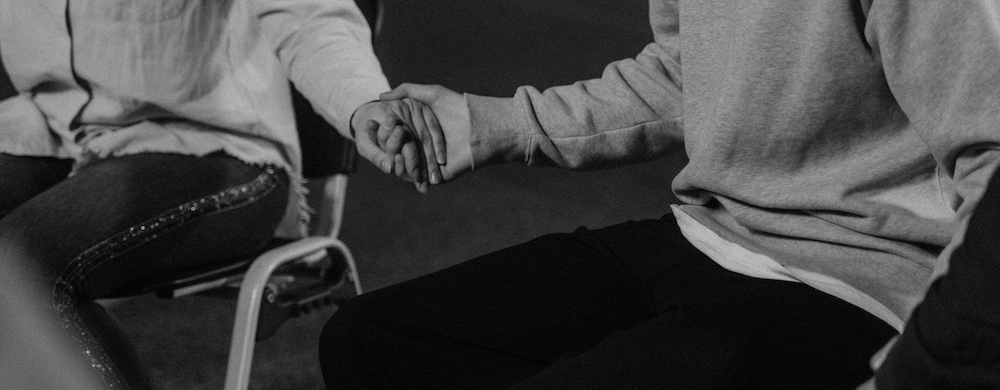Addiction Treatment: How Long Does Rehab Last?

Whatever the vice, substance and alcohol abuse is often a coping strategy in life: to numb pain, evade problems, and to escape reality. Unfortunately, only 10% of the 21 million Americans who have at least 1 addiction receive treatment. That means 90% of addicts–for whatever reason–are not getting the help they might need to recover and graduate into a healthier, more sustainable lifestyle. It can be extremely challenging to admit you have a problem, but it takes courage and bravery to accept that you are ready to move forward and take back the reins on your life by means of rehabilitation.
Prominent questions surface when an addict is considering seeking help: How long does a rehab program last? What program is right for me? How will this affect my personal life? What kind of treatment do I need and where are the best treatment centers? Something that should be addressed right off the bat is that all of the answers to these questions are unique to each individual. Rehab is not a linear process as each individual has particular conditions that will require distinct ways of working through their problems.
Table of contents
Understanding Addiction Treatment and Rehab Length
But how long does rehab usually last? There is a misconception that rehab has a set length of time, because it is common to see programs that span 30, 60, or 90 days, as well as 6 months. The length of treatment for alcohol use disorder (AUD) or drug addiction, however, truly varies case to case. It is in the final stage of recovery–the advanced recovery stage– where this question becomes fuzzy.
Key factors such as how long the substance abuse has persisted, what the severity of the abuse is, where the individual is located, what rehab they can afford, and what substances are involved all play major roles in the decision-making process. What’s more of a determining factor is an addict’s ability to commit to getting healthy, because that will ultimately dictate how long they will be in rehab.
With that in mind, let’s dive deeper into different rehab program lengths to see what options are out there.
How Long Does Rehab Take?
So how long does rehab last, truly? The average length of rehab treatment is anywhere between 1-6 months. We’ve outlined what the process looks like for each program length.
- 30 day program – good candidates are patients with mild addictions
- 60 day program – good candidates are patients with mild to moderate addictions
- 90 day program – good candidates are patients with mild to severe addictions that need accountability and long term support
- 6 month program – good candidates are patients with severe addictions and seek long term aid
Addicts can become residents at their treatment center for further oversight, depending on the severity of their addiction. Residency at a treatment center requires that addicts put most other aspects of their life on pause to get healthy. All in all, getting clean and devising a long-term plan for rehabilitation requires–at minimum– a solid three months of rehab.
While rehab might seem rigid in terms of timeframe, addiction treatment will be ongoing even once the patient has left a rehab center, which we will describe in detail below.
How Long Does Drug rehab last?
What drug an addict abuses can contribute to the length of their stay in a rehabilitation center. While drug treatment programs generally follow the 30, 60, 90 day, or 6 month rule, opioid addiction is treated differently than stimulant abuse or depressants. It is suggested to do more research when finding out what program is right for you.
How Long Does Alcohol Rehab last?
Similar to drug rehab, alcohol rehab programs are generally anywhere from 30-90 days, with 6 months being for those who have extreme disorders.
Of course, studies show that the longer you seek help, the more likely you are to achieve better results. That being said, longer treatment durations aren’t a guarantee pathway to recovery. The patient has to be willing to replace crippling habits and start anew. A 6 month program can seem intimidating and overwhelming to some, but it can make all the difference for those who are in a constant state of suffering. It is important to take a closer look at the Four Stages of Rehab to understand why length might vary in certain stages, such as the first and last stages.
The Four Stages of Rehab
There are four core stages of rehab that those who are battling with substance or alcohol abuse should familiarize themselves with.
Treatment Initiation
This stage commences once an individual suffering from addiction reaches out for help. Outreach can be achieved via a mental health professional, a medical doctor, the criminal justice system, or a substance abuse treatment center.
Regardless of how a person enters into treatment, uncertainty and resistance are typically coupled with initiation into a treatment center. Once the individual receives substantial education on the available treatment options as well as how to prepare, a treatment plan is set in motion. Detoxification and relinquishing of all substances are discussed thereafter. To be frank, this step could take as little as a day or as long as the patient takes to come to their senses and accept that help is the answer.
Early Abstinence
In this stage, the individual has established early abstinence and has entered into a rehab program after detoxifying and withdrawing from substance use. Patients are very vulnerable in this state and it can be overwhelming and highly intimidating. Replacing a healthier way of coping with problems offers its own set of challenges once a substance is removed from the patients periphery. As such, stage 2 lays focus on immediately actionable problems such as preventing relapse and controlling cravings.
Maintaining Abstinence
Stage three is very involved and can be emotionally difficult for many. This is where therapy becomes a vehicle for uncovering underlying causes of substance use and abuse. The therapy process will evolve to incorporate analysis of negative impacts on one’s life as a result of substance abuse. Behavioral therapy helps people realize ways in which addiction contributes to the problems they face and how it creates stagnancy.
Seeing as reflection and introspection are major aspects of this phase, this can be very challenging for individuals to process. It is where deeper rooted issues begin to surface, and it is no doubt intense and emotionally draining–especially when patients are already having to deal with making drastic changes in their behavior patterns.
If a patient isn’t living onsite at the treatment center, they will spend several days a week in treatment to develop new life skills and alternative coping mechanisms to avoid relapse in the future.
Advanced Recovery
Well we’ve answered the question “how long does rehab last?” But how long does it genuinely take to recover from an addiction? Well, addiction is a chronic disorder, meaning this phase never ends. Why? Because as with most chronic disorders, there is no cure for addiction. Advanced Recovery is a lifelong process that spans the rest of said individuals life, requiring individuals to adapt a greater awareness for their behaviors and triggers in all environmental settings they find themselves in. It is crucial for patients to take note when they feel they are starting to relapse or slip up on old habits.
This stage is also where long-term goals are defined, as well as consequences of what potentials will incur if relapse were to materialize. Feelings of shame, guilt, and regret begin to disintegrate, and the amount of time in therapy is decreased.
Once long-term goals are established, reintegration into society, the individuals communities, and their families and friends follows suit. Reestablishing relationships can be extremely challenging, and rediscovering or reinventing one’s identity can present its own obstacles. Needless to say, the longer the person lives in recovery, the easier it becomes to maintain sobriety.
How Long Does Outpatient Rehab Last?
Outpatient addiction treatment in California is generally a 3-6 month program that is far less restrictive than inpatient programs. Dedicated time is reduced to around 10-14 hours a week visiting a local treatment center. These sessions center around education on drug abuse, how to cope while abstaining from drug and alcohol use, and involve a combination of individual and group counseling.
Outpatient drug rehab gives addicts the ability to recover in the comfort of their own home during treatment. The nature of most outpatient programs allows those with full-time jobs to continue with their daily lives as sessions are generally outside of 9-5 work hours.This option is best suited for those who do not wish to terminate their employment, or desire to remain close to their community during the recovery process.
Once someone has “finished” their program, it is highly encouraged to participate in ongoing aftercare outlets, such as periodic therapy sessions or habitual attendance at 12-Step program meetings.Alcoholics Anonymous (AA) or Narcotics Anonymous (NA) can be used to supplement outpatient programs as they provide accountability, support, and a place to vent.
How Long Does Inpatient Rehab Last?
Outpatient rehab might be more fitting for those with busy work schedules or people who need to remain close to friends and family when battling abuse. Unfortunately, not all patients can successfully fight off substance abuse when there is more accessibility and less accountability. Some patients need stricter assistance to help monitor their self control and coping tendencies.
When you are an inpatient, how long does rehab last? Is it any different in length than outpatient treatment? As one can imagine, inpatient treatment costs more than outpatient drug rehab, as addicts live at the facilities. It is far more hands-on and requires that medical care and psychotherapy be readily available.
Inpatient programs typically require more meetings, therapy sessions, and group counseling for patients, but for the sake of their health. The length of the program is around the same time frame, but the commitment is much more demanding. Residential rehab is not for everyone, but can make a huge difference. If a financial situation is the make it or break it between choosing an outpatient and an inpatient program, it is recommended to focus on recovery and getting back to a healthy place. Set financial struggles aside; this is your life and could be a matter of life or death.
Why Longer Drug Rehab Stays Are Often Preferred
If you have a serious addiction to a substance or alcohol, longer drug rehabilitation programs are preferred. Those who are emotionally fragile or do not have an outside support system are good candidates for longer programs, as well as anyone who is struggling with mental health issues.
Continuing Care & Long Term Recovery
Luckily, there are many outlets to find solace when on the road to recovery. With the abundance of activities in San Diego, there are plenty of ways to stay healthy and happy while maintaining one’s sobriety after one has ended rehab.
Meditation and movement like doing yoga in San Diego or taking long walks on the beach can help to keep the mind at ease and can serve as a distraction from cravings. Activities such as surfing have been known to facilitate those coming out of a bad relationship with substances. Check out the benefits of surfing in sobriety if you think you or someone you know could benefit from trying it out.
If a relapse occurs, feelings of regret, shame, and guilt tend to follow. Patients take on the unbearable weight of feeling like a disappointment to themselves, their sponsors, and their support system. Immediately after relapsing, a firm decision should be made as to whether going back to rehab is the most viable solution. Chatting about substances frequently or hanging around others who use substances can be a red flag and should prompt a recovering addict to reenter a treatment program immediately.
If your relapse is an isolated incident, reach out to your support system and utilize therapy to dig deeper into the root of the relapse. If you are committed to analyzing and tweaking your recovery care plan to better suit your needs, you can likely skip going back to a facility. On the other hand if you are seeing repetitive patterns of substance abuse, it is worth it to enter a stricter program.
When reentering treatment there should be a larger focus placed on cognitive behavioral therapy. CBT can aid in identifying triggers and enables recovering addicts to practice new behavioral responses to distorted ways of thinking. Again, physical activity and other healthy stress relievers are important to engage in during relapse and recovery.
San Diego Rehab: Where to Get Help
We’ve provided a short list of treatment centers in San Diego, however if you do a quick google search of “Rehab Centers in San Diego,” you should be able to find a notable list of pristince treatment centers.
Hope Canyon
Perched near Rose Canyon Open Space Park in between La Jolla Village and University City, Hope Canyon offers support and residency at a serene place close to the ocean while recovering from an addiction.
- Address: 2821 Lange Avenue, San Diego, CA 92122
- Phone: (877) 701-0327
- Hours: 24/7
- Type: Inpatient Residential Treatment, Partial Hospitalization, Intensive Outpatient Programs
Evolve Cole Ranch (Rehab For Teens)
Evolve Cole Ranch is a residential teen rehab in San Diego, located in North County in the beachside community of Encinitas. They specialize in mental health and addiction treatment for teens, and this facility accepts no more than six teens in treatment at one time. Why such a small number? “Our teenagers feel like they’re in a personal, individualized recovery center designed to meet their specific therapeutic needs–because that’s exactly where they are.”
- Address: 710 Cole Ranch Rd., Encinitas, CA 92024
- Phone: (858) 323-2317
- Type: Teen Rehab — Individual Therapy, Family Therapy, Group Therapy, DBT Skills Training, Experiential Therapy, Psychiatry & Nursing, Outings, Aftercare Planning
SHORELINE Recovery Center
SHORELINE Recovery Center lies in the mecca of University Heights. They provide individualized treatment for a variety of drug addictions as well Inpatient Rehab and Outpatient programs.
- Address: 183 Calle Magdalena Suite 101, Encinitas CA 92024
- Phone: (866) 278-8495
- Hours: Call for more info
- Type: Alcohol Rehab, Drug Rehab, Heroin Rehab, Xanax Rehab Inpatient Residential Treatment, Partial Hospitalization, Intensive Outpatient Programs
Once outpatients are back in the real world, it can be hard to reintegrate back into society, faced with temptations on a daily basis. Patients should know that there are tons of resources right at your fingertips, and a wide variety of mental health services in San Diego. It might also be worth speaking directly with someone who offers unbiased advice and coping mechanisms.
Step into your power and book a session with a psychiatrist in San Diego if you need to chat with someone about your struggles. If you are on the brink of relapsing, remember that there is help out there for you. Alcohol and drugs are not the answer. If you or anyone you know is having a hard time, please don’t hesitate to reach out for additional assistance.





